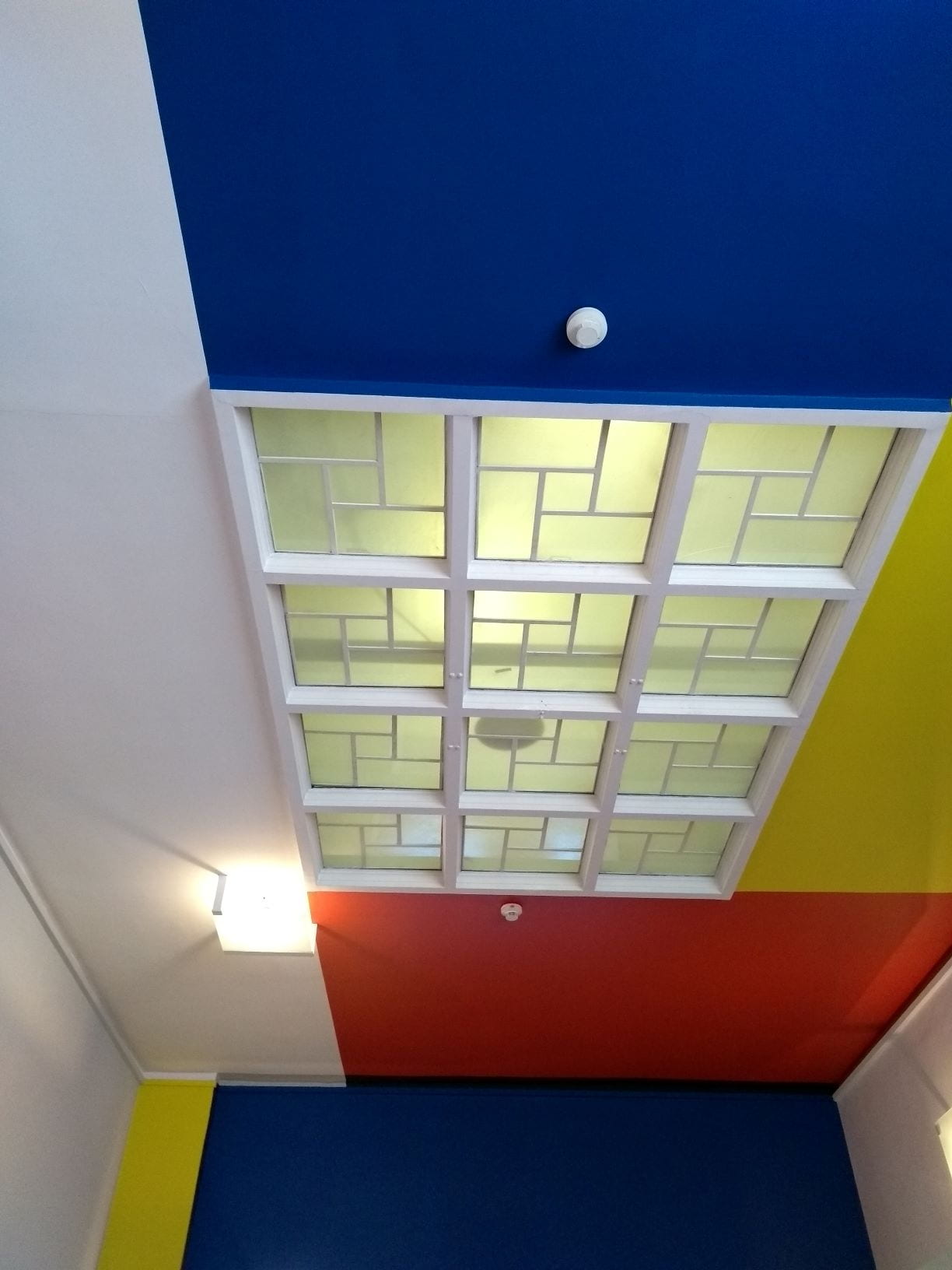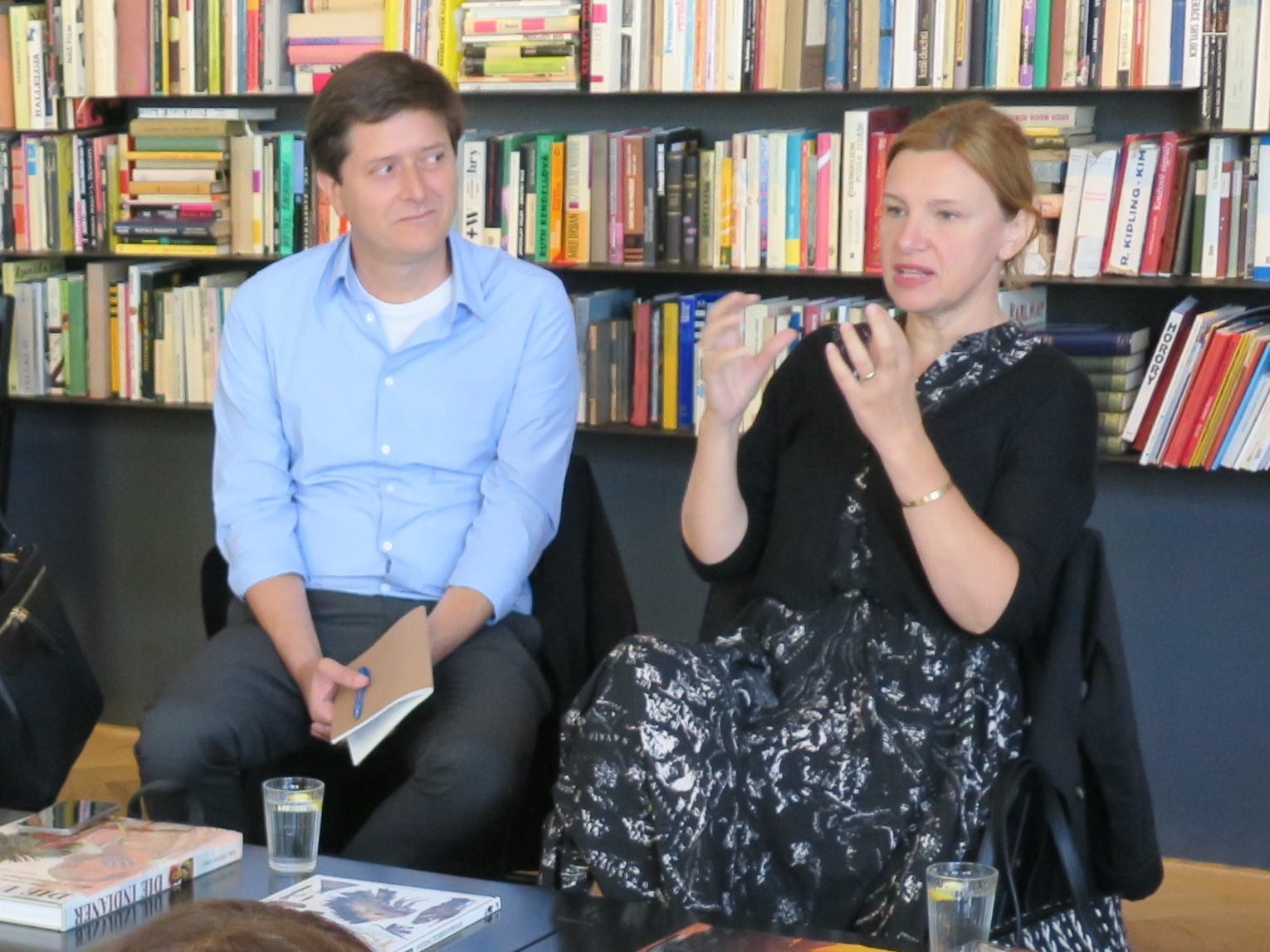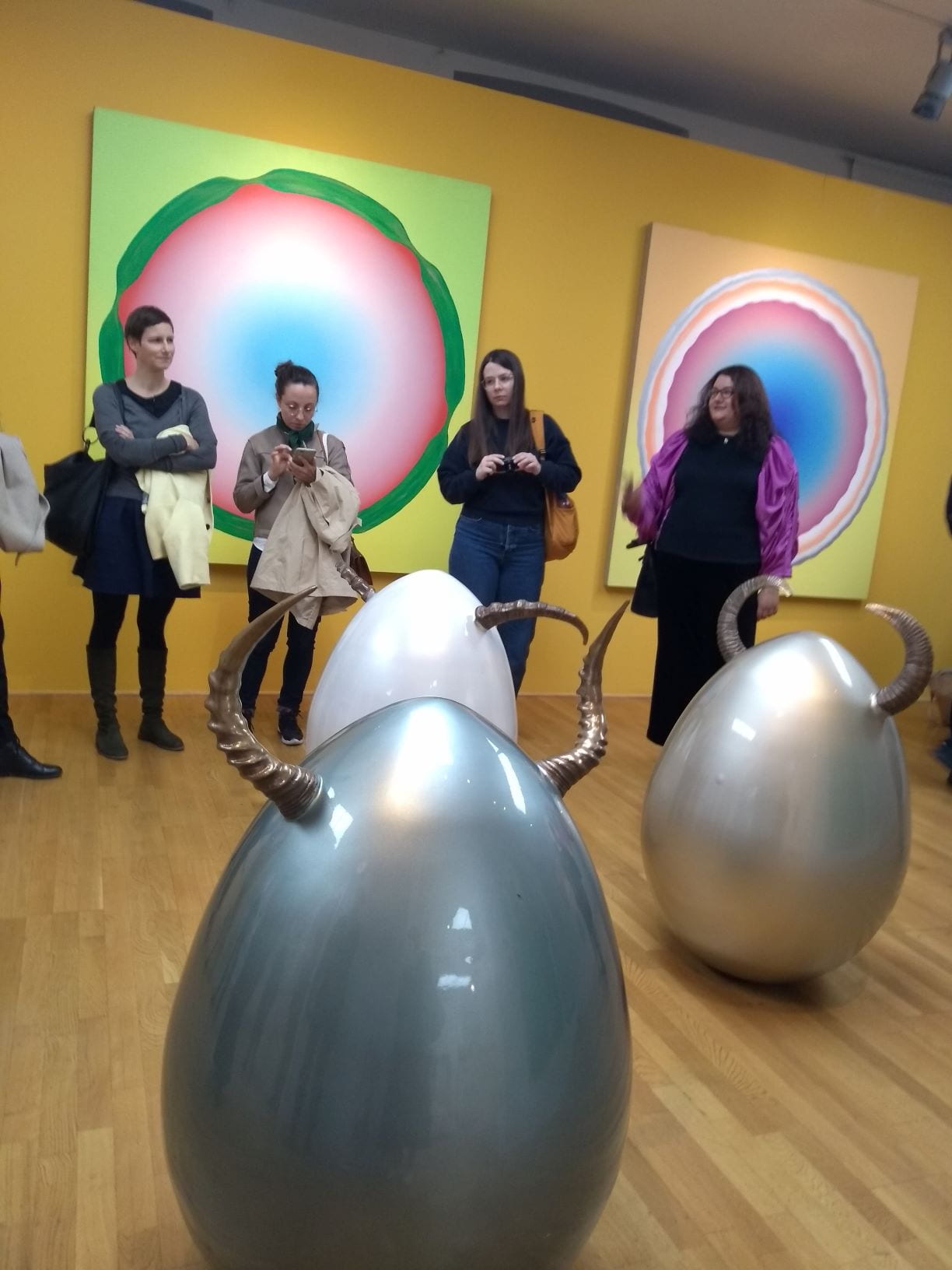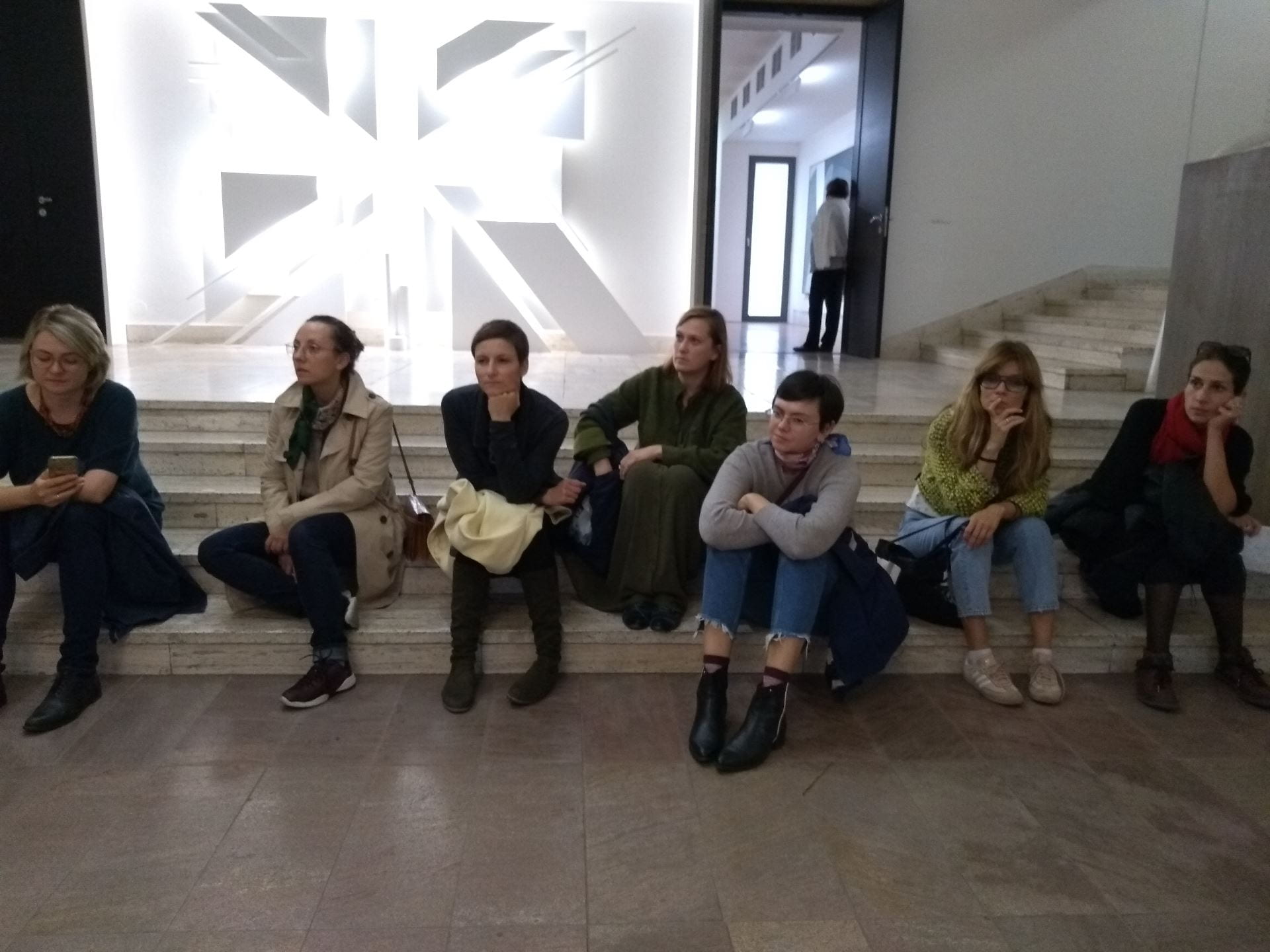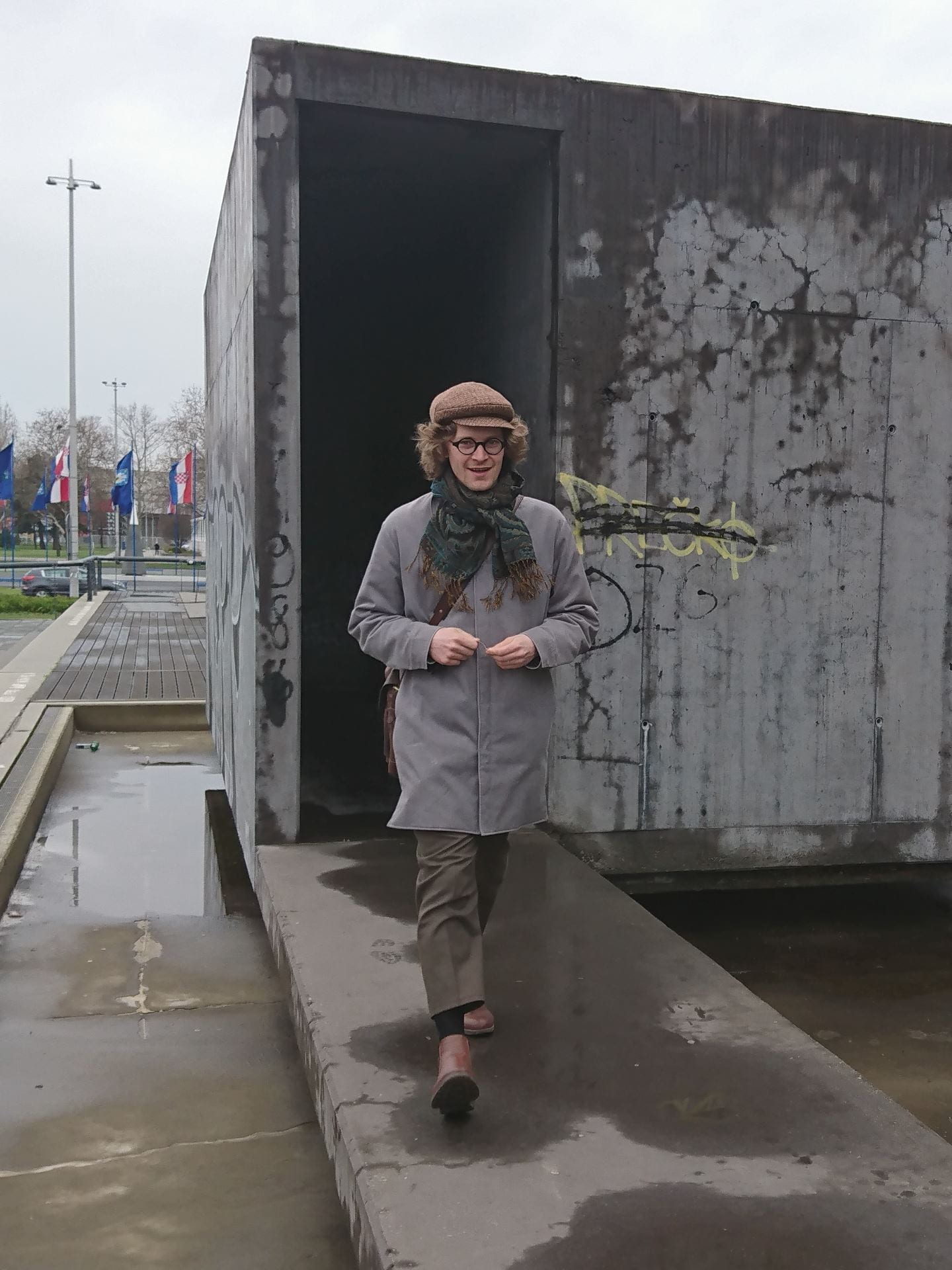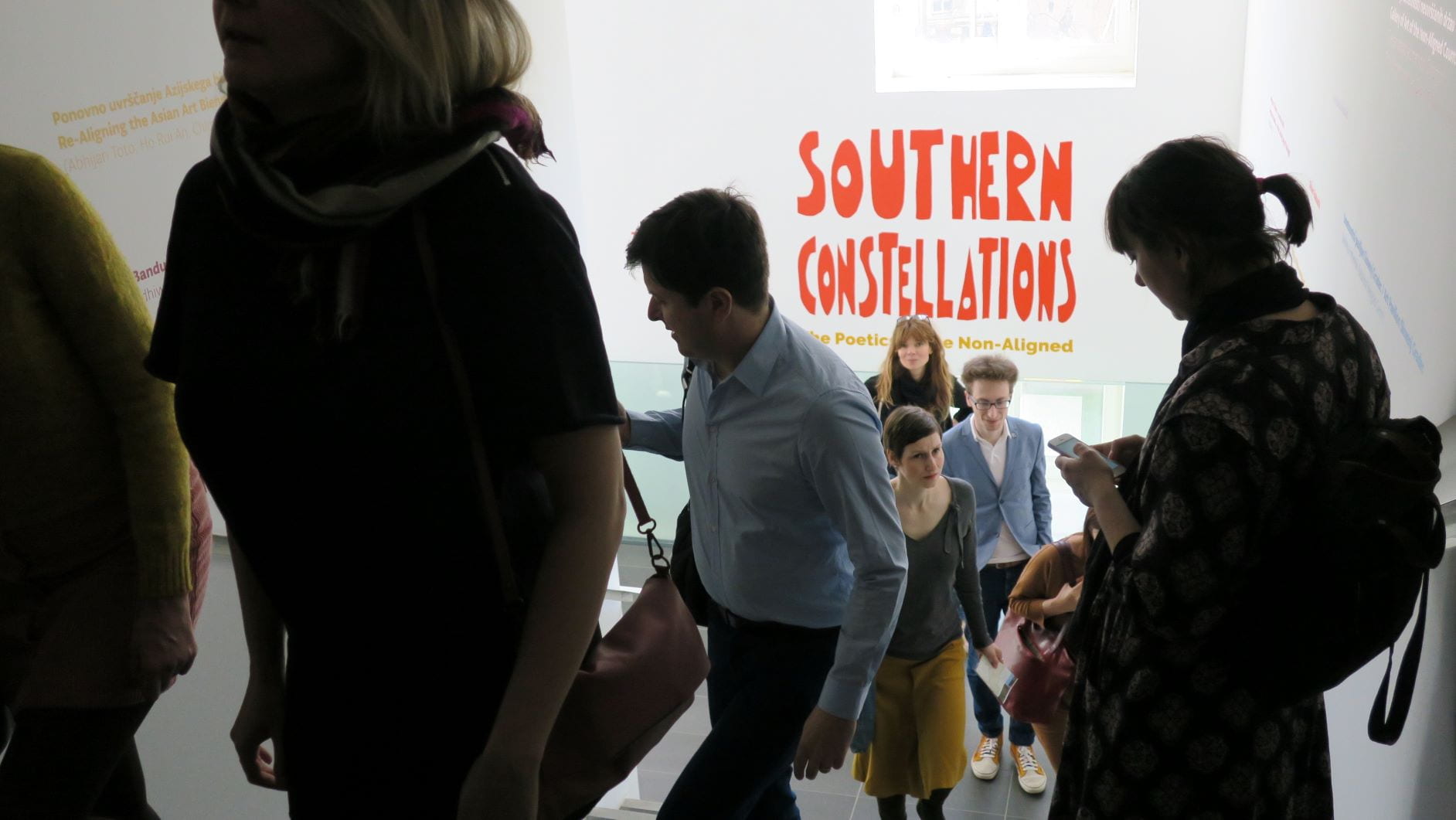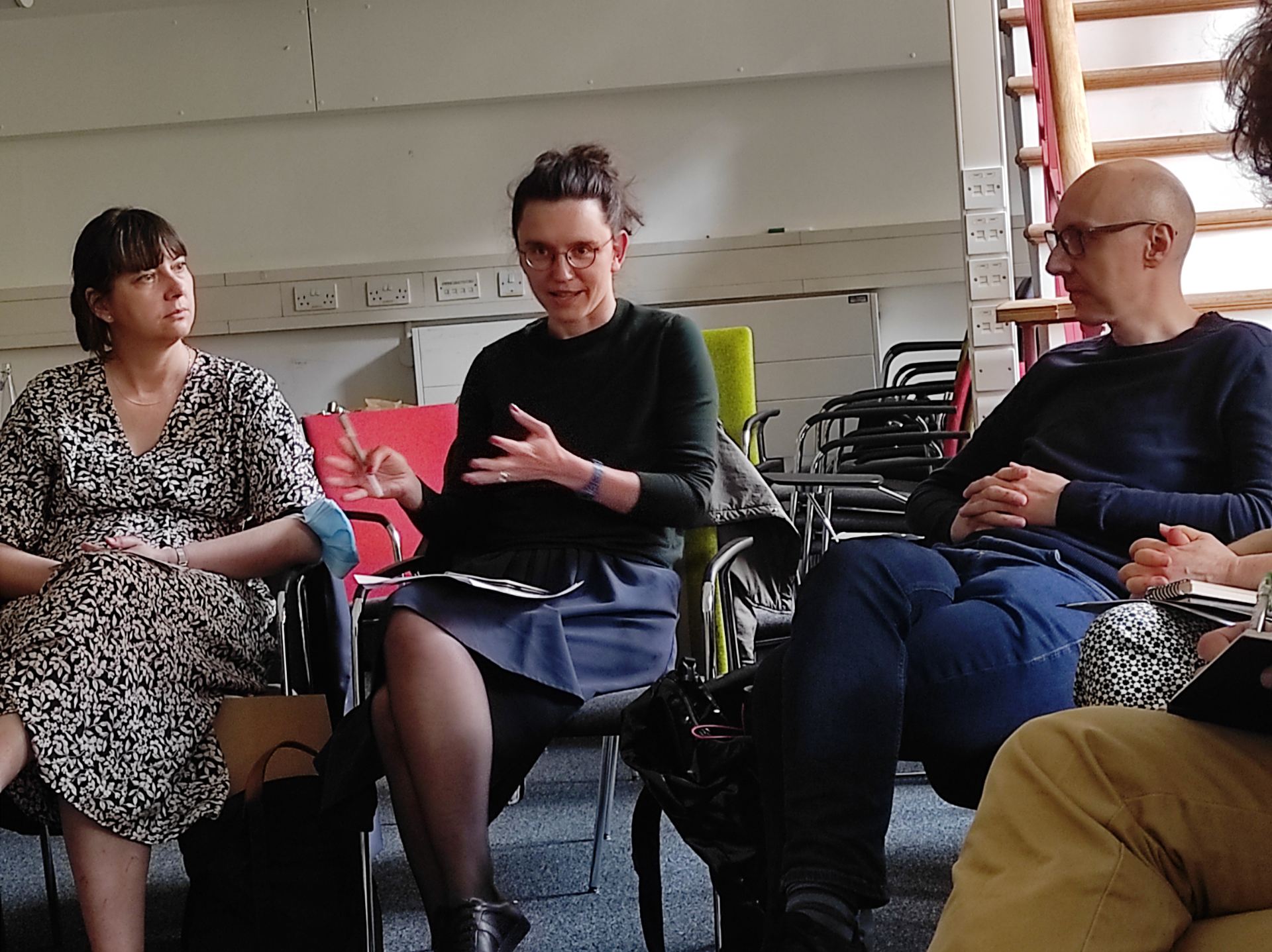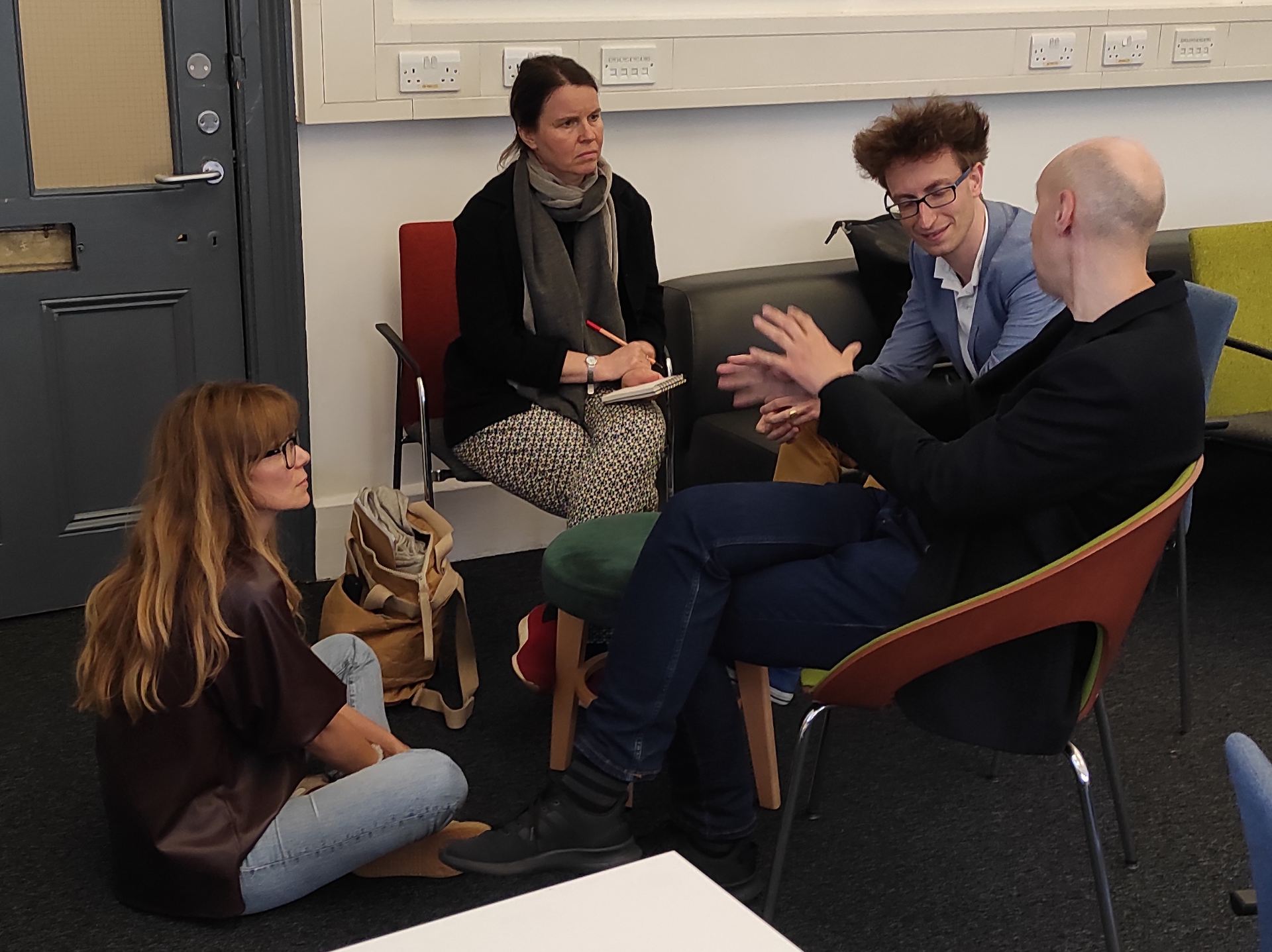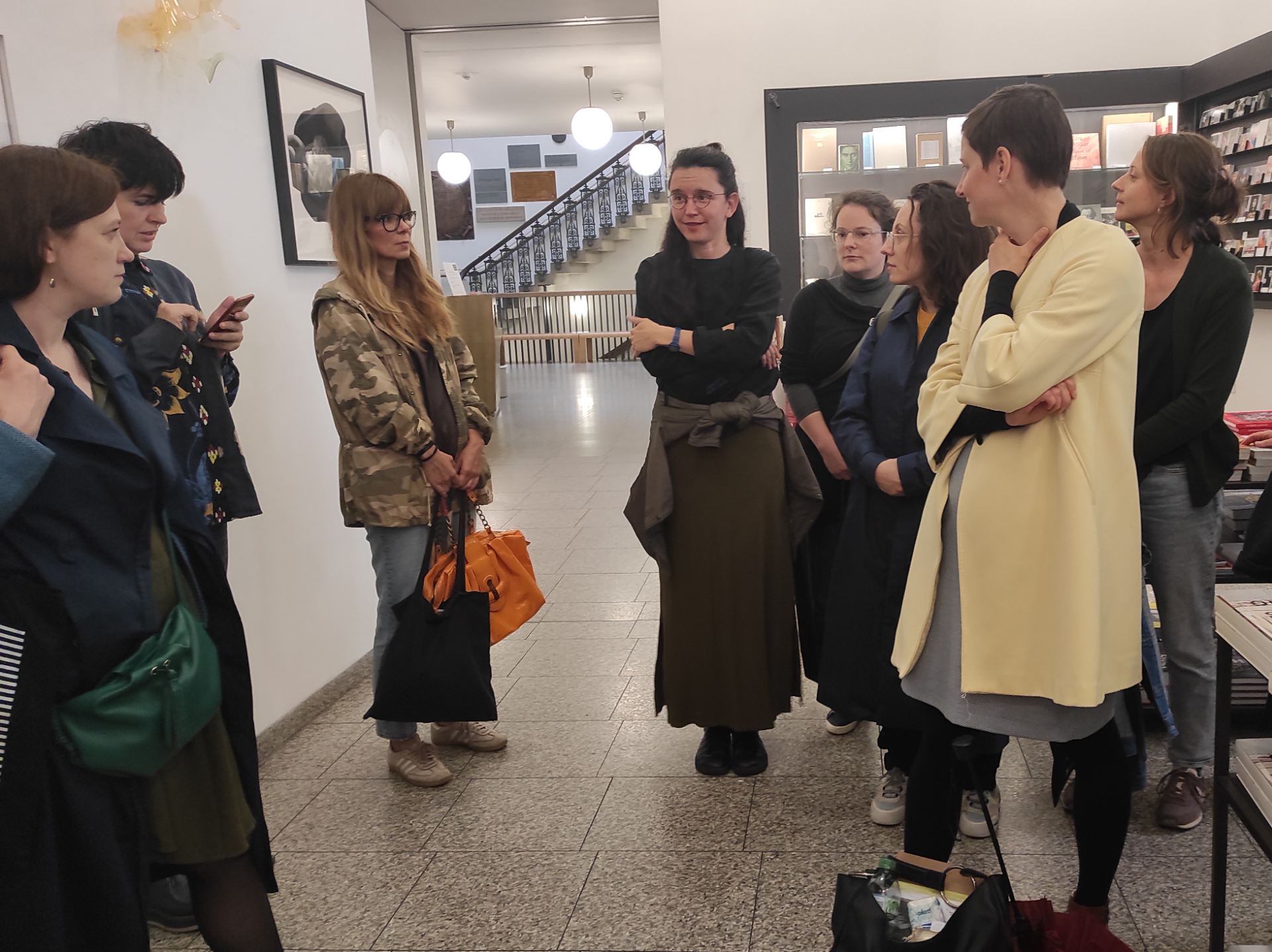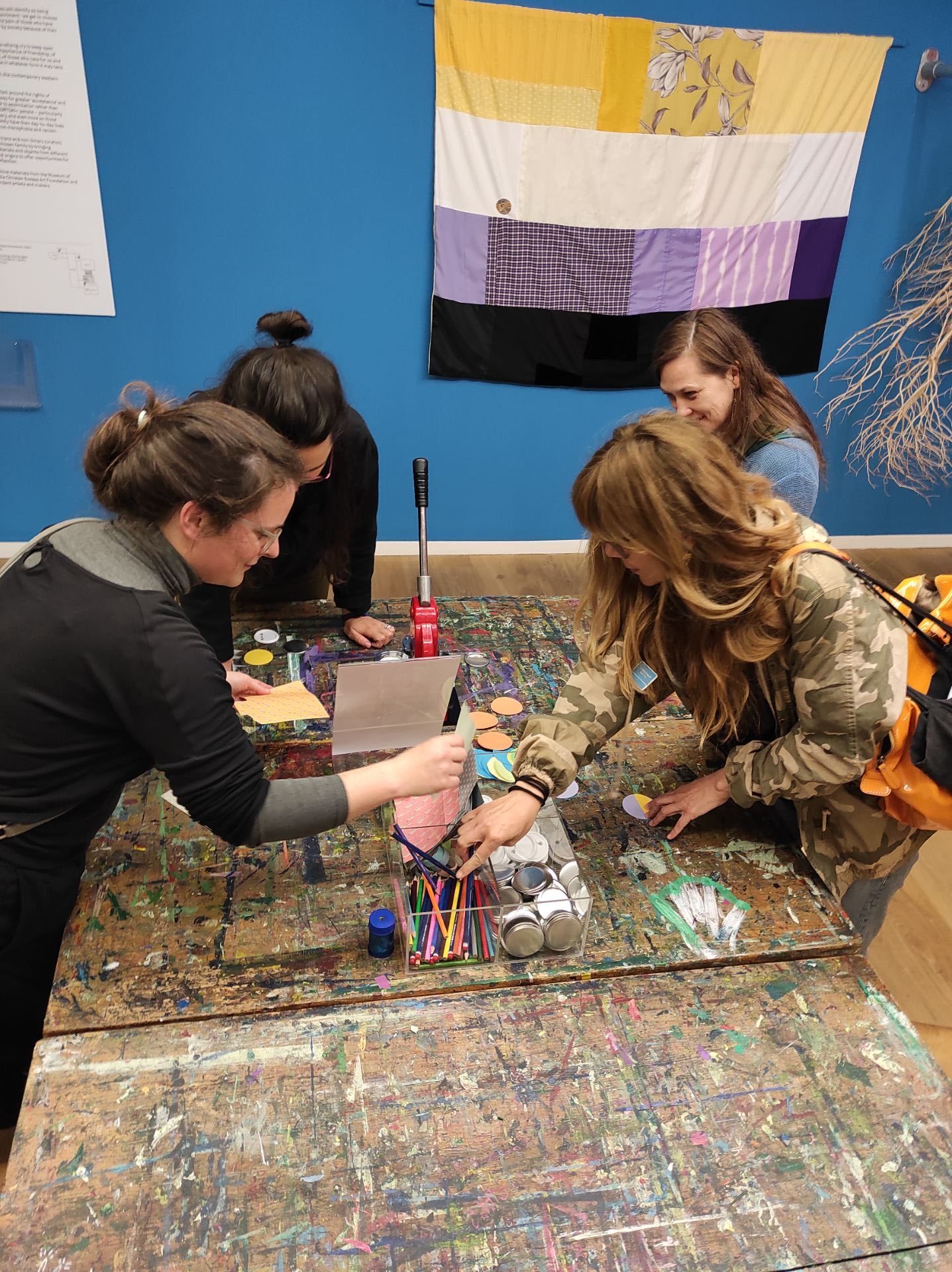East European Art in the UK
By confrontations, on 28 August 2022
By Maja and Reuben Fowkes
The final afternoon of Confrontations was given over to discussion of the changing place of Central and East European art in the UK, with guest lectures by David Elliott and Katarzyna Murawska-Muthesius, concluding with a public panel discussion with Lina Džuverović, Alicja Kaczmarek and Vlad Morariu as guest speakers.
Curator David Elliott focused in his presentation on two moments in exhibition history, the pivotal survey After the Wall: Art and Culture in Post-Communist Eastern Europe, which he co-curated with Bojana Pejic in 1999, and Balagan, an exhibition that a quarter of a century later explored the chaos and confusion of the subsequent path of transition as suggested by the one word title. This felt like a timely moment to revisit After the Wall, an exhibition that was formative for understandings of Eastern Europe as an artistic region, and to hear about its minor coda, pointing to the destabilisation of the geographical categories of the post-communist era of high globalisation.
 The presentation by Katarzyna Murawska-Muthesius, lecturer at Birkbeck and author of Imaging and Mapping Eastern Europe, took the form of a personal perspective on the evolution of academic interest in East European art in the UK. Rare archival images of conferences and gatherings of researchers on the region dating back to the pre-digital era of the mid-1990s underlined the embodied quality of exchanges amongst members of the informal network of scholars of Central and Eastern European art, and were reminders of the loss of colleagues such as Piotr Piotrowski. The title of Kasia presentation was she explained a partial corrective to the tendency to constantly enumerate how much work still needs to be done in terms of research into specific artists, as well as in asserting the position of our region in wider narratives and debates. She chose to focus instead on everything that has already been achieved, from scholarly publications and exhibition history to the activity of research networks such as Confrontations, in deepening knowledge and understanding of East European art.
The presentation by Katarzyna Murawska-Muthesius, lecturer at Birkbeck and author of Imaging and Mapping Eastern Europe, took the form of a personal perspective on the evolution of academic interest in East European art in the UK. Rare archival images of conferences and gatherings of researchers on the region dating back to the pre-digital era of the mid-1990s underlined the embodied quality of exchanges amongst members of the informal network of scholars of Central and Eastern European art, and were reminders of the loss of colleagues such as Piotr Piotrowski. The title of Kasia presentation was she explained a partial corrective to the tendency to constantly enumerate how much work still needs to be done in terms of research into specific artists, as well as in asserting the position of our region in wider narratives and debates. She chose to focus instead on everything that has already been achieved, from scholarly publications and exhibition history to the activity of research networks such as Confrontations, in deepening knowledge and understanding of East European art.
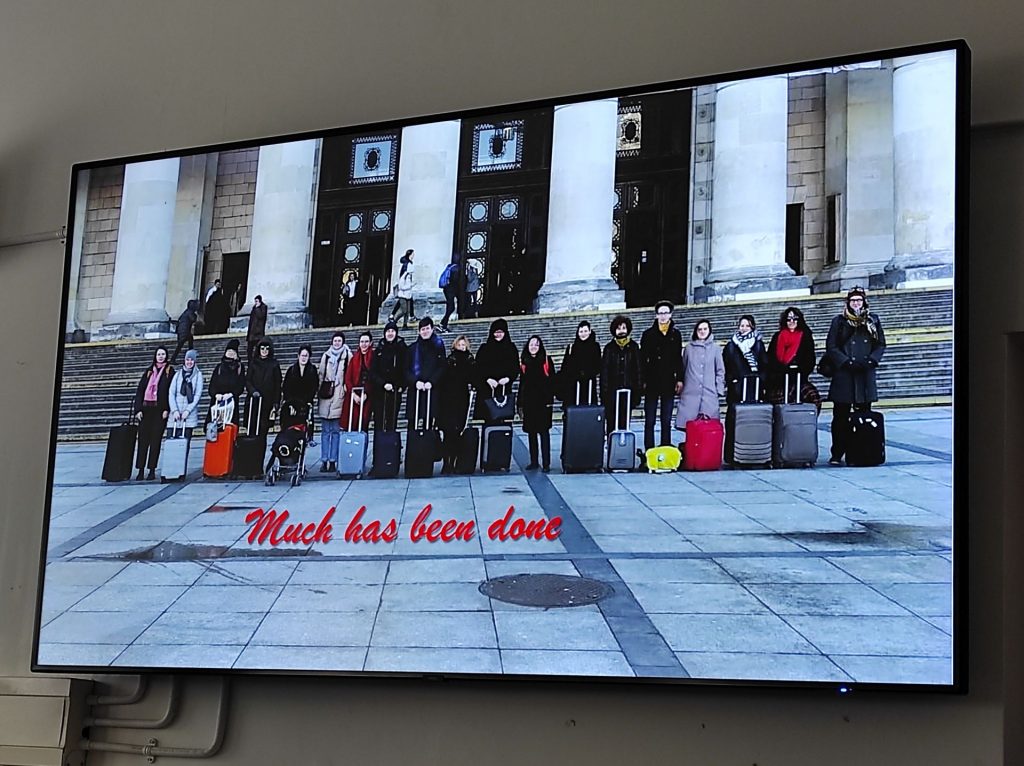 The public panel on East European Art in the UK saw insightful presentations by UK-based curators, academics and institution builders with close ties to the region. Lina Džuverović reflected on the challenges she faced as a curator at Calvert22 in the early Twenty-Teens in bringing the work of prominent East European artists, including Sanja Iveković and IRWIN, to London audiences.
The public panel on East European Art in the UK saw insightful presentations by UK-based curators, academics and institution builders with close ties to the region. Lina Džuverović reflected on the challenges she faced as a curator at Calvert22 in the early Twenty-Teens in bringing the work of prominent East European artists, including Sanja Iveković and IRWIN, to London audiences.
 Alicja Kaczmarek, founder and director of Centrala Space, a cultural organisation based in Birmingham that provides a platform for artists from the region, presented the results of the In-between Spaces research project into the Inclusion and Representation of Central and East European artists in the UK Creative Economy. Among the key findings she shared was that artists from the region are underrepresented in art galleries, exhibitions and festivals, in comparison to artists from Western Europe and North America, and that as migrants from Eastern Europe they experience a complex form of racialisation in the UK based on negative media portrayals. Vlad Morariu spoke about the Collection Collective, of which he is a member, and its speculative exploration of the possibility to short-circuit the structure of the art market by constructing a contemporary art collection that is owned and managed collectively by its members.
Alicja Kaczmarek, founder and director of Centrala Space, a cultural organisation based in Birmingham that provides a platform for artists from the region, presented the results of the In-between Spaces research project into the Inclusion and Representation of Central and East European artists in the UK Creative Economy. Among the key findings she shared was that artists from the region are underrepresented in art galleries, exhibitions and festivals, in comparison to artists from Western Europe and North America, and that as migrants from Eastern Europe they experience a complex form of racialisation in the UK based on negative media portrayals. Vlad Morariu spoke about the Collection Collective, of which he is a member, and its speculative exploration of the possibility to short-circuit the structure of the art market by constructing a contemporary art collection that is owned and managed collectively by its members.
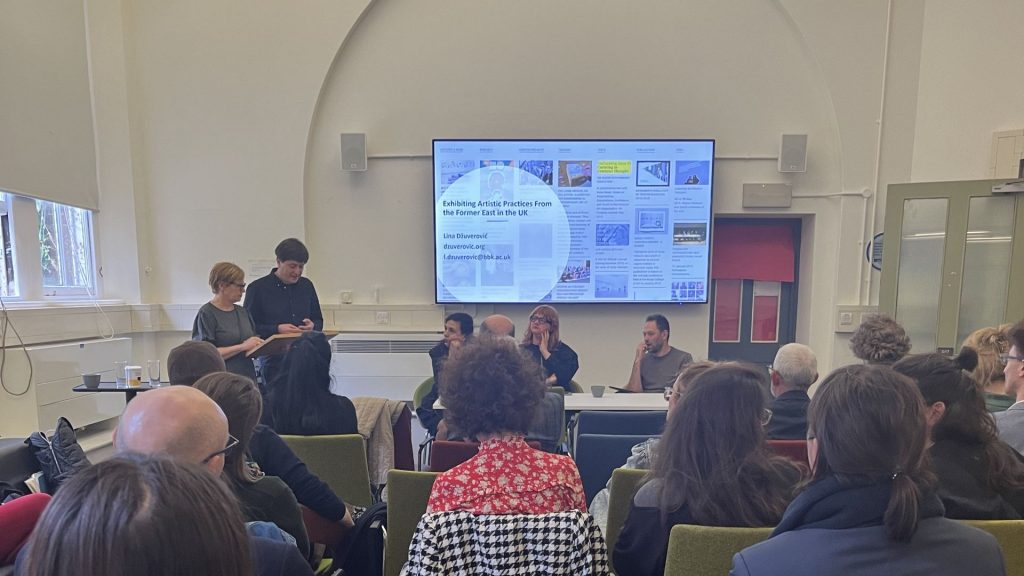 The panel discussion underlined the overlap between issues around the representation of the region in art historical and museum accounts and the everyday challenges faced by East European artists in gaining visibility in the UK artworld. It also demonstrated the existence of a transnational community of scholars, curators and artists, who through their work and acts of solidarity, continue to raise the profile of East European art and artists across global geographies.
The panel discussion underlined the overlap between issues around the representation of the region in art historical and museum accounts and the everyday challenges faced by East European artists in gaining visibility in the UK artworld. It also demonstrated the existence of a transnational community of scholars, curators and artists, who through their work and acts of solidarity, continue to raise the profile of East European art and artists across global geographies.
 Close
Close














